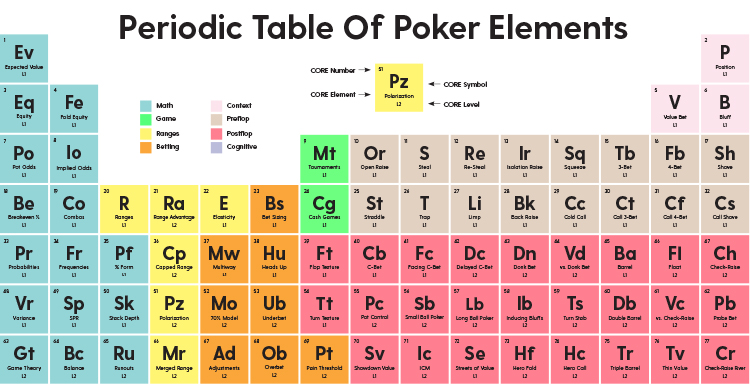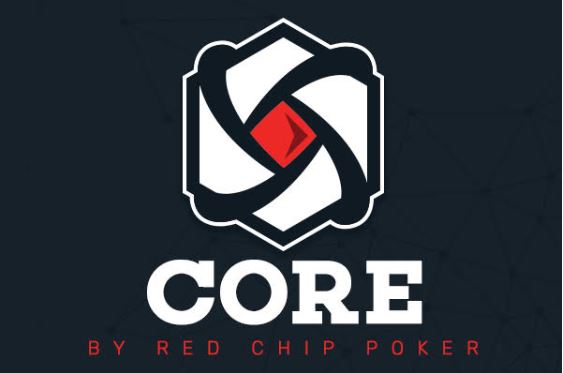Ed. note: This review has been updated to reflect Red Chip Poker’s CORE 2.0 offering.
Poker training sites have been around for many years now. Most have followed a very similar model: produce videos and series on various poker topics and let the subscriber take what they can from the information provided. This is, one could argue, a perfectly natural approach. But, despite its uniformity there’s little in the way of hard evidence that it produces highly-skilled poker players, and thus no absolute reason to infer that it is the most efficient approach for achieving that goal.
Red Chip Poker’s CORE program is a radical departure from the conventional poker training approach, and their CORE 2.0 update just takes the program to the next level.
It was motivated, at least in part, by the combined experiences of Red Chip Poker coaches through their work with hundreds of students, and through the serendipitous realization that many Red Chip Poker team members had backgrounds in education.
So their team got together, spent hours laying out each building block required for a cohesive poker strategy, many hours more debating the ordering of those building blocks, and months crafting every lesson with you – the student – in mind. The end result is the most comprehensive A-Z poker course ever made. With CORE you learn the right material at the right time to walk away with a future-proof strategy that you can understand, internalize, and actually use.
An additional 100+ lessons were added atop the original 100+ lessons to form CORE 2.0, plus each and every one of the original lessons has been updated and refreshed as well.

This may seem like overkill, but think about a recent hand where you bluff 3-bet. Even to do something so mundane you would need to understand the basic building blocks behind the play, namely:
- Hand reading the range your opponent raised
- Positions, and how they can influence folding frequencies
- The break-even % when bluff 3-betting
- How blockers can increase the profitability of bluffing
- If opponent calls your 3-bet, how and when to bluff c-bet the flop
- If opponent 4-bets, how and when to 5-bet over the top
There are many things to know and consider before running any given poker play, but CORE is there with lessons on all of those (as well as 200+ other lessons!).

Poker Instruction Ought to Imitate Higher Education Methodology
Consider a non-poker real world example. Suppose you enroll in college and declare a major in physics. You will be given a list of required physics courses as well as some electives. In addition, there will be required math classes that provide you with the tools you need to solve physics problems. You’ll also be compelled to take laboratory classes to better understand experimental methods, and a statistics class or two so you can analyze experimental data.
Across thousands of further education institutions worldwide, your path will be quite similar. In addition to learning the necessary mathematical techniques, you’ll first be introduced to basic mechanics, followed by electricity and magnetism. Next up you’ll likely encounter wave motion and optics and the rudiments of quantum physics. As this process continues, the curriculum may diverge, but most will include solid state physics and fully-fledged quantum mechanics, along with special and general relativity.
So if a physics professor were to pick up a physics major syllabus from any accredited institution and looked at the year-by-year course listings, she would almost certainly see a curriculum similar to the one offered by her own department. Why is this?
Universities have been teaching physics for hundreds of years. Sure the advanced courses have evolved as we’ve learned more about the universe, but what a student needs to know, and the rough order in which they need to learn it, has been hammered out through trial and error. Perhaps most importantly, we have confidence that the standard curriculum works, simply because it produces physicists who upon graduation can accomplish the tasks required of physicists.
This is the exact approach that Red Chip has taken with CORE!

By breaking down poker into its constituent elements, CORE aims to present this complex and nuanced game in manageable modules. Lessons build on one another and are supplemented by quizzes. An active discussion area involving subscribers and the content producers reflects Red Chip Poker’s commitment to community-based learning. The people who’ve compiled the course have taken the conscious step of asking what a poker player needs to know in order to succeed, and presenting that material hierarchically in a manner similar to a university curriculum.
As part of the CORE 2.0 update, numerous new hand breakdowns have been added in both the cash game and tournament realms to help you further enhance your capabilities and decision-making processes in a bevy of different spots you’ll face.
Other additions you’ll get as part of the CORE 2.0 update include a 12-video cash game course by Ed Miller and a 22-video tournament course by WSOP bracelet winner (and Cardplayer Lifestyle contributor) Chris Wallace exploring modern tournament strategy.
One of the novel and central devices of the curriculum also has a physics-inspired theme: the Periodic Table of Poker Elements.

DOWNLOAD: Full-size copy of the “poker periodic table of elements”
As the name suggests, this breaks down poker into its fundamental constituent parts. Moreover, like the conventional Periodic Table, the exploration of how those parts fit together gives a deep understanding of how all the elements of poker combine to produce a complete, winning strategy.
The scientific method relies on the interplay between theory and practice. Similarly, the CORE program emphasizes both:
- Level I lessons lay out the basic elements of poker
- Level II lessons expand upon that material and extend into more sophisticated concepts
- Level III lessons bring it all together with real-world hand examples that illustrate the concepts in action.
See the entire CORE syllabus here.
And like any successful course, the quizzes allow students to assess their progress and return to material when they need more practice.
Red Chip Poker’s CORE 2.0: Pricing
Costing just $5/week makes this poker course one of the most affordable poker training products on the market. The only prerequisites are that you can handle enough arithmetic to balance a checkbook, and that you have the desire to succeed. The course allows relative beginners a comfortable entry point into poker training, but also offers loads of value to more seasoned players who can proceed rapidly through the more basic material to the more advanced lessons.
If all of the above seems a lot to digest, here is a quick video of the philosophy behind CORE and its content:
The fact that you can sign up for CORE today and get started for the same low price of just $5 especially after the plethora of updates to the course added in the 2.0 update is truly incredible. Your bankroll will thank you!








Comments